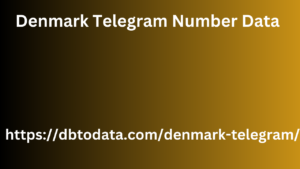Post by account_disabled on Mar 5, 2024 4:20:21 GMT
Since moving all their work to Asana, the team is more aligned on strategies, goals and priorities. They were also able to optimize their performance and launch campaigns x faster to drive traffic, increase reviews and generate revenue. Sales e marketing Guru , a real-time knowledge management solution, is a rapidly growing startup with teams split between Philadelphia, where the company is headquartered, and San Francisco. Although the company uses Slack and Zoom to communicate, which work great for meetings and small tasks, the two teams had difficulty coordinating when it came to larger projects, especially since they were located in different offices. Both teams spent several hours a week in project status meetings, which slowed down a fast-growing company. Since the marketing team had already been using Asana, they decided to extend it to sales, train the team on the platform, and start working in the shared environment. Now that both teams use Asana, they have a single point of contact for all projects between sales and marketing.
Instead of sitting in Zoom meetings multiple times a week, anyone, at any Denmark Telegram Number Data time, can see who is working on what. Ownership of each task is clearly delineated and everyone knows which parts of the project belong to them and which parts are someone else's responsibility. That clarity takes away ambiguity, allowing people to focus on work instead of checking in to see who needs to do what, untangling tangled threads, or doing double duty. Operations Founded in , Viessmann is a multibillion-dollar, family-owned heating and refrigeration systems company with more than , employees in more than countries around the world. Although the company has more than a century of business under its belt, it has embraced technology both in the types of machinery it builds and in how the business itself operates. To remain competitive years after its founding, Viessmann has embraced digital transformation in its products, incorporating the Internet of.

Things into many of its offerings and internal processes. A few years ago, founder Professor Dr. Martin Viessmann and his son now co-CEO Max, understood the importance of improving the way the company operated internally. For Martin and Max, the organization needed to continually modernize its products and workplace to continue to thrive over the years. They started a series of research to understand what the organizational flaws were within the organization, they discovered that employees felt the need for a tool to easily connect, collaborate and work more frequently together, in an increasingly distributed way across the company. Viessmann had grown a lot over the decades, so much so that its members worked in different countries and time zones, which complicated collaboration, especially because there was no single system that everyone could refer to and turn to to manage the work between teams.
Instead of sitting in Zoom meetings multiple times a week, anyone, at any Denmark Telegram Number Data time, can see who is working on what. Ownership of each task is clearly delineated and everyone knows which parts of the project belong to them and which parts are someone else's responsibility. That clarity takes away ambiguity, allowing people to focus on work instead of checking in to see who needs to do what, untangling tangled threads, or doing double duty. Operations Founded in , Viessmann is a multibillion-dollar, family-owned heating and refrigeration systems company with more than , employees in more than countries around the world. Although the company has more than a century of business under its belt, it has embraced technology both in the types of machinery it builds and in how the business itself operates. To remain competitive years after its founding, Viessmann has embraced digital transformation in its products, incorporating the Internet of.

Things into many of its offerings and internal processes. A few years ago, founder Professor Dr. Martin Viessmann and his son now co-CEO Max, understood the importance of improving the way the company operated internally. For Martin and Max, the organization needed to continually modernize its products and workplace to continue to thrive over the years. They started a series of research to understand what the organizational flaws were within the organization, they discovered that employees felt the need for a tool to easily connect, collaborate and work more frequently together, in an increasingly distributed way across the company. Viessmann had grown a lot over the decades, so much so that its members worked in different countries and time zones, which complicated collaboration, especially because there was no single system that everyone could refer to and turn to to manage the work between teams.
